















© Shazam Casino, 2026. All Rights Reserved
Walking up to a felt table can feel like pure chance. The phrase Blackjack odds simply labels the math behind each card and decision. Grasping these numbers slowly turns a guessing game into informed play. In the next few lines you’ll see why even small percentages matter.
Every casino game relies on a metric called the house edge, measuring how much the casino expects to keep. In a 3:2 payout rate game, RTP sits near 99.5% when basic strategy is followed. That generous figure still masks how tiny fractions decide winners and losers. By timing hits, stands, or doubles you push player advantage toward even winning probability.
Each move in Blackjack can be mapped to an outcome tree showing all possible totals. For example, hitting on a hard 16 against a dealer 10 carries a 62% chance of bust, while standing loses roughly the same amount in the long run. Choosing the lower-risk option raises your twinning probability when a favorable shoe appears. Combine smart play with solid bankroll discipline, and those small numeric edges become your roadmap to consistent, confident sessions.
Blackjack looks simple, yet each card hides math. To grasp the table, start with probability basics: there are four suits and thirteen ranks, so your opening hand comes from 1,326 possible pairs. That figure shapes Blackjack probability, the chance a deal gives you 21, a pair, or a tough sixteen. Factor in dealer rules—standing on soft-17 or hitting—because they change the pool of remaining cards and therefore the draw odds you face on every hit.
Once the cards land, evaluate hand strength before acting. A hard 12 against a dealer 2 is weaker than it feels, but an ace-rich soft total lets you risk another card safely. Game math shows that if you follow basic strategy, your win rate sits around minus one half percent, meaning the house edge is tiny yet real. By comparing expected values for stand, hit, split, or double, you transform casual guesses into informed moves.
When gamblers discuss numbers, the first figure they mention is the house edge—the built-in margin that keeps casinos profitable. Think of it as a few cents shaved from every dollar wagered. The amount seems tiny, yet over thousands of spins, rolls, or hands it pays for the neon, the staff, the multimillion-dollar jackpots, and the mesmerizing choreographed fountain shows.
Mathematically, that margin equals one hundred minus the payout percentage a game returns. A roulette wheel paying 97.3 % thus grants the operator a 2.7 % casino advantage. The number is theoretical; individual sessions swing wildly, but over time the edge settles in as reliably as gravity, provided standard rules apply and no exotic side bets sneak in, spread across many spins each year.
Rule variations influence outcomes more than lucky streaks. European Blackjack with the dealer standing on soft-17 shows a 0.40 % edge, yet the same table allowing double after split trims it further through edge reduction. Skilled players push the margin down again by using optimal play charts—choosing hits, stands, doubles, and splits that minimize losses, not hunches alone, published by mathematicians and seasoned pit bosses.
Only when the edge dips below zero does a genuine player advantage emerge, achievable in niche cases like perfectly executed video-poker strategies or limited-time Blackjack promotions. Most of the time, the smart goal is simply to slow expected loss: seek favorable rules, manage stakes, quit when tired, and remember that every hot streak is probability on loan until variance inevitably corrects the score again.
|
Rule Set & Key Conditions |
Edge (%) |
Notes |
|
Roulette – European (single 0) |
2.70 |
Standard payouts |
|
Blackjack – S17, DAS allowed |
0.40 |
Dealer stands on soft 17 |
|
Blackjack – H17, no DAS |
0.66 |
Dealer hits soft 17 |
|
Video Poker – Jacks or Better (9/6) |
0.46 |
With perfect optimal play |
Knowing Blackjack payouts helps you decide if a table deserves your chips. In most casinos the standard payout for a natural twenty-one appears as a simple ratio, and that fraction quietly shifts the probability curve. When player and dealer end with the same total, the hand is pushed—one of the frequent tie scenarios—and no chips move. Yet that apparently neutral result still shapes long-term bankroll growth.
A classic 3:2 payout returns one-and-a-half units for every unit staked, preserving about a 0.5 % edge over leaner tables. It also makes the even money option available when the dealer shows an ace, swapping upside for certainty. Meanwhile, the felt advertises insurance bet odds of 2:1, luring beginners to hedge against a dealer Blackjack and quietly bulking house revenue.
Many pits, however, promote the 6:5 payout, a reduced payout that inflates the house edge by roughly 1.4 % in a six-deck game. Losing a fifth of your expected return may look trivial, yet the gap compounds over hundreds of shoes and wipes out skilful play. The comparison below converts the ratios into cash for a $10 wager, highlighting why seasoned players refuse discount odds. By internalising the figures, you can decide to sit, stand, or stroll to a friendlier table before the first card falls.
|
Outcome ( $10 bet ) |
3:2 Table |
6:5 Table |
Difference |
|
Natural Blackjack |
$15 |
$12 |
−$3 |
|
Regular Win (1:1) |
$10 |
$10 |
$0 |
|
Push |
$0 |
$0 |
$0 |
|
Insurance Win (2:1) |
$20 |
$20 |
$0 |
Start by picking a player-friendly table: look for 3:2 payouts on naturals, the option to double after splits, and no more than six decks. Such rules shave the house edge before you act. Next, memorise a slim basic strategy chart so every Blackjack strategy choice—hit, stand, split, or double—is driven by math rather than gut feel. Even a one-percent edge swing matters over dozens of shoes.
Control what you can: your money. Effective bankroll management means dividing funds into fixed units, setting win-and-loss limits, and never chasing. Skip insurance and other dazzling side wagers; avoiding side bets keeps the edge from spiking. Tracking results in a notebook helps you stay accountable and curb tilt. Combine these habits with disciplined table selection and you steadily improve odds without raising your stakes.
Finally, knowing when to hit/stand. Use the mini chart below for hard totals versus a dealer up-card (H = Hit, S = Stand, D = Double):
|
Total |
2-3 |
4-6 |
7-A |
|
8- |
H |
H |
H |
|
9 |
H |
D |
H |
|
10-11 |
D |
D |
H |
|
12-16 |
H |
S |
H |
|
17+ |
S |
S |
S |
Practice until these moves are second nature, pair them with calm pacing, and your session will run on logic, not luck.
Casino Blackjack tables attract extra attention when players start talking numbers, especially side bets odds. These optional wagers hinge on rare card combinations rather than beating the dealer. Popular examples include Perfect Pairs (getting two identical cards), 21+3 (melding your first two cards with the dealer’s up-card for a poker-style hand), and Insurance, a quick hedge against the dealer’s Blackjack. Some venues also promote bonus bets that pay whenever certain suited streaks appear, tempting newcomers with headline multipliers reaching 25:1 or higher.
Yet the mathematics behind each side option matters more than the colorful payout chart. Players should weigh the risk vs reward by comparing probability to payoff. Perfect Pairs arrives about once in 59 hands, 21+3 every 34, so 30:1 may still favour the casino. Insurance looks enticing, yet it is statistically unwise unless you really track remaining tens. Suited-triple bonus bets are genuine high-risk plays surfacing in under one percent.
|
Side Bet |
Approx. Probability |
Common Payout |
|
Perfect Pairs (Suited) |
1.7 % (1 in 59) |
25 : 1 |
|
21+3 – Straight Flush |
0.2 % (1 in 459) |
30 : 1 |
|
21+3 – Any Made Hand |
3.3 % (1 in 31) |
9 : 1 |
|
Insurance |
8.5 % |
2 : 1 |
|
Suited Triple Bonus |
< 1 % |
100 : 1 |
Many players are curious about the card counting odds quoted in books, yet few grasp what those percentages truly mean. In simple terms, counting tracks the flow of high versus low cards to predict when the shoe tilts toward the bettor. This prediction begins with a running count—a mental plus-minus that rises as small cards fall and drops when face cards appear.
Because multiple decks are common, skilled players convert the running figure into a true count by dividing by decks remaining; this keeps the metric consistent regardless of shoe size. Guided by that ratio, they set a disciplined betting spread, pressing wagers only when mathematics suggests a real edge. Sensible sizing steadies bankroll swings and avoids reckless spikes that attract attention.
Table conditions matter, too. Shuffle penetration—the proportion of the shoe dealt before mixing—determines how long a positive count can develop. Deeper penetration lengthens profitable windows and, combined with camouflage plays, elevates disciplined counting to the status of advantage play rather than superstition. Even then, variance persists, and no system can erase the house edge every session.
Finally, every aspiring counter must study legality. Tracking cards in your head is lawful in most jurisdictions, yet casinos may still refuse service, change rules, or simply shuffle sooner when skilled play is suspected. Learning low-profile betting rhythms, rotating venues, and respecting staff requests lets enthusiasts explore the mathematics responsibly while keeping entertainment, not confrontation, at the forefront. Smart record-keeping helps measure progress over months.
When you sit at a digital table, every hand is produced by certified RNG games that reshuffle a virtual shoe after each deal, eliminating card-tracking tactics and evening out variance. Because of this constant shuffle frequency, online Blackjack odds typically hover around a 0.5-0.6 % house edge when basic strategy is applied.
By contrast, live dealer games rely on a physical eight-deck shoe that is only shuffled when the cut card appears, so streaks can emerge and card counting regains a sliver of value. That subtle difference means live Blackjack odds drift closer to 0.7 %, although side bets, table rules and tipping customs can nudge the edge higher.
Speed of play also separates the formats: an online table can deal 60–70 hands per hour, while a broadcast studio rarely tops 25, giving casual players more time to think and boosting player interaction through on-screen chat. Choose the environment that fits your bankroll, concentration span and social mood.
|
Feature |
Online |
Live |
|
House edge* |
~0.5-0.6 % |
~0.7 % |
|
Shuffle frequency |
After every hand |
When cut card appears |
|
Speed of play |
60–70 hands per hour |
20–25 hands per hour |
|
Player interaction |
Chat, emojis |
Real-time conversation |
Securing solid returns at the Blackjack pit starts with understanding how casinos structure each game. Look for low house edge tables that advertise the best Blackjack odds while keeping payouts transparent. Next, study table selection details such as favorable rules like 3:2 naturals, dealer stands on soft 17, and surrender options. Before you sit, review bet limits to ensure they match your bankroll strategy and watch seat availability so you can act quickly. Finally, choose the right table with a friendly pace and attentive dealer, because atmosphere influences focus and decision quality. Consistent discipline turns these small edges into profits.







